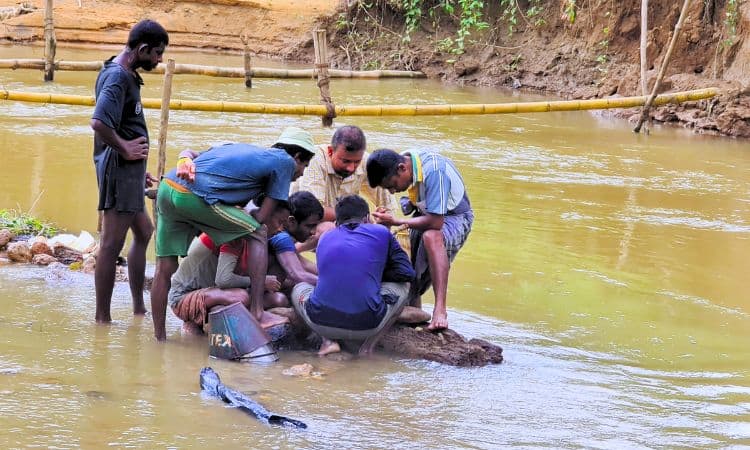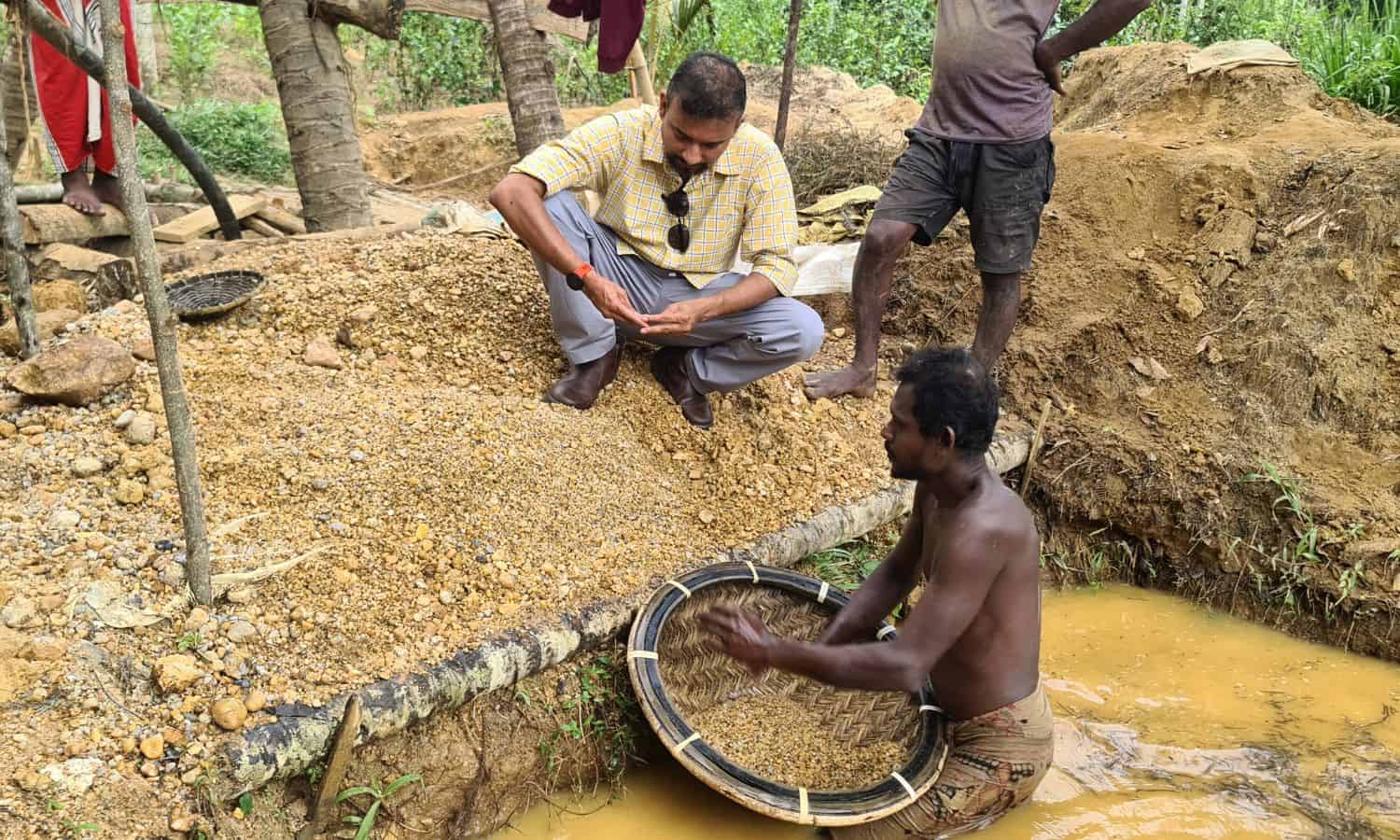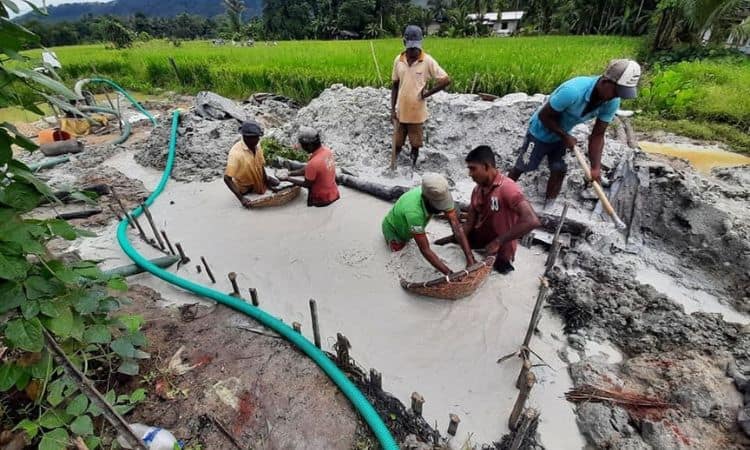Gem Mining in Sri Lanka & Thailand: A Complete Guide
Gem Mining in Sri Lanka and Thailand: History, Methods, and Modern Insights
For centuries, Sri Lanka and Thailand have stood at the heart of the world’s colored gemstone trade. From the fabled blue sapphires of Ratnapura to the ruby-rich soils of Chanthaburi, these two countries continue to shape the jewelry industry. But what makes their gems so special? How are these treasures unearthed, and what impact do mining traditions have on local communities? In this guide, we take you deep into the vibrant world of gem mining in Sri Lanka and Thailand—exploring history, mining methods, major centers, and the unique qualities that define each region’s stones.

sapphire mining in sri lanka in a river
Why Sri Lanka and Thailand Are Global Gem Hubs
Both Sri Lanka and Thailand have earned global reputations as premier sources of colored gemstones. Here’s why:
- Sri Lanka: Known as the “Island of Gems,” Sri Lanka has supplied sapphires, rubies, and other precious stones to the world for over 2,000 years.
- Thailand: Famed for its high-quality corundum (sapphires and rubies), Thailand is both a mining center and a global hub for gem cutting and trading.
Sri Lanka: The Island of Gems
1. Historical Legacy and Gemstone Fame
Sri Lanka’s gem history stretches back over two millennia. Traders from Rome, Arabia, and China once journeyed to this island for its brilliant sapphires, rubies, spinels, and more. Even today, Ceylon sapphires are prized for their vivid hues and unparalleled brilliance—often regarded as the finest in the world.
2. Major Gem Centers in Sri Lanka
- Ratnapura: The “City of Gems,” Ratnapura is the country’s principal gem-mining region, famous for its abundance and variety—especially blue sapphires.
- Elahera District: Yields commercially significant quantities of sapphire, spinel, garnet, chrysoberyl, zircon, and tourmaline.
- Nuwara Eliya: Known for unique varieties, including rare sapphires and other colored stones.
There are around five major gem markets in Sri Lanka, with the Ratnapura Gem Market standing out as the most prominent, especially for sapphires.
3. Alluvial Mining: Tradition and Technique
Gem mining in Sri Lanka is predominantly alluvial—meaning gems are found in river systems and ancient riverbeds. Here’s how it works:
- Gem Gravel (‘ILLAM’): The gem-rich layer, called “ILLAM,” can be discovered at depths ranging from a few meters to as deep as 40 meters.
- Mining Methods: Pits are dug by hand, and the gravel is carefully sifted and washed to reveal sapphires, rubies, and other gemstones.
- Labor Structure: Most mining operations are small-scale, locally run by groups who share profits among landowners, financiers, and workers. This cooperative model sustains thousands of families.

sapphire mining in sri lanka
4. Gemstone Diversity and Quality
- Sapphires: Renowned for their brilliant blue, Sri Lankan sapphires also come in pink, yellow, padparadscha (pink-orange), and other rare shades.
- Rubies: Historically known as an original source, though contemporary ruby finds are rarer than sapphires.
- Other Gemstones: Spinel, garnet, chrysoberyl, zircon, tourmaline, and more are also mined in significant quantities.
Sri Lankan gems are valued for their natural, untreated qualities and are highly sought after in international fine jewelry markets.
5. Socio-Economic Impact
The gem industry is a major livelihood for thousands of Sri Lankan villagers. Despite increasing mining restrictions aimed at environmental protection, traditional mining remains central to many rural communities, supporting local economies and preserving cultural heritage.
Thailand: The Gemstone Powerhouse of Southeast Asia
1. Key Gem Mining Regions
- Chanthaburi: The most famous gem-producing region, celebrated for its blue sapphires and rubies. Chanthaburi is also the epicenter of gem trading and cutting.
- Trat: Another important locality, with a long history of producing high-quality corundum.
2. Mining Methods and Access
- Pit Mining: Traditional, small-scale pit mining is still practiced in some rural areas.
- Mechanized Mining: In recent decades, mechanized techniques have been introduced, though access is often restricted to protect remaining deposits and manage environmental impact.
3. Gem Cutting and Household Industry
Unlike Sri Lanka, Thailand is just as famous for its gem cutting and processing as for its mining. In Chanthaburi, many homes are equipped with grinding and polishing wheels, turning raw stones into sparkling gems. This household industry provides employment to thousands and has made Thailand a world leader in gem cutting and heat treatment technologies.
4. Gemstone Characteristics
- Blue Sapphires: Thai blue sapphires are highly esteemed, often resembling the finest Sri Lankan stones in color and clarity.
- Rubies: Thailand’s rubies, especially from Chanthaburi and Trat, have long been valued for their rich, deep reds—though local sources are now largely depleted.
Thailand’s expertise in heat treatment and enhancement has further elevated the desirability and value of its gemstones in global markets.
5. Impact on Communities
The gem industry in Thailand, like in Sri Lanka, is a major source of employment, supporting thousands of villagers and fueling local economies. Even as mining restrictions increase and some sources dwindle, the tradition of gem cutting and trading keeps these communities thriving.
Key Differences and Similarities
- Mining Methods: Both countries use a mix of traditional and, increasingly, mechanized methods. Sri Lanka remains more focused on alluvial, hand-dug pits, while Thailand has adopted more mechanization in some areas.
- Gem Varieties: Both are renowned for sapphires and rubies; Sri Lanka offers greater diversity (including spinel, garnet, zircon, etc.), while Thailand is famous for corundum and its lapidary skills.
- Market Structure: Sri Lanka’s major gem markets (e.g., Ratnapura) operate in the open, while Thailand’s Chanthaburi is a global trading and processing hub.
- Socio-Economic Role: In both countries, gem mining and processing support thousands of households and are interwoven with local culture.
Challenges and the Future of Gem Mining
The gem industries of Sri Lanka and Thailand face common challenges:
- Resource Depletion: Centuries of mining have reduced easy-to-access deposits, pushing miners to deeper and more remote locations.
- Environmental Protection: Both governments have increased regulations to safeguard water sources and landscapes.
- Market Pressures: The global demand for ethically sourced, untreated stones favors traditional miners but also increases scrutiny and costs.
- Technological Change: Mechanized mining and advanced gem treatments are changing the landscape, especially in Thailand.
Despite these challenges, both countries are adapting—emphasizing sustainability, worker welfare, and the unique story behind each gemstone.
Tips for Gem Buyers and Enthusiasts
- Ask about origin: Sri Lankan (Ceylon) and Thai gems have specific color and clarity profiles—learn to recognize their unique traits.
- Seek reputable sources: Purchase from established dealers with clear sourcing and treatment disclosures.
- Understand treatments: Many Thai gems are heat-treated; Sri Lankan stones are often prized for being untreated. Know what you’re buying.
- Visit local markets if possible: The Ratnapura Gem Market and Chanthaburi’s gem district offer unforgettable experiences for enthusiasts.
Conclusion: The Enduring Legacy of Sri Lankan and Thai Gems
From the ancient trade routes to today’s fine jewelry boutiques, Sri Lanka and Thailand remain cornerstones of the gem world. Their stones—sapphires, rubies, and more—are not just beautiful minerals, but bearers of culture, tradition, and the enduring spirit of their people. Whether you’re a gem lover, a jewelry buyer, or a curious traveler, understanding the roots of these precious stones adds depth and value to every sparkling facet.



Comments (0)
Write your review